Something magical was observed at the start of this walk.
It was a sunny, wind still morning, and as the walk commenced, the whole bush land looked as if it had been covered with a patchwork quilt of gossamer, made overnight by many spiders. Their many shaped webs stood out because they were covered with a fine dew. It was very special.
The walk commenced on Fraser Avenue with a display of lovely Russula species (Fungi) which had maroon/mauve caps, and thick whitish stems.
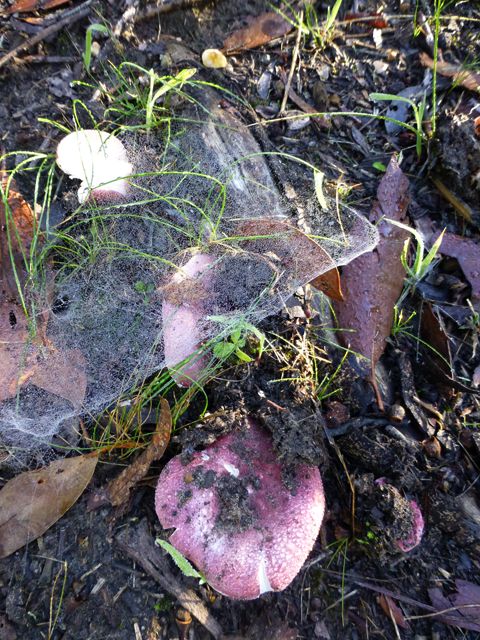
Russula fungus with cobwebs
Continuing up the track to the Anglesea Perimeter Walk sign, we turned left and walked along for approximately 30 metres where on the right hand side of the track Leporella Fimbriata – Fringed Hare Orchids were growing. This orchid usually has a single flat elliptical green leaf with red veins. The petals are erect and the labellum has a prominent purple fringe. The flower stem is about 25 cm in height, and bears several yellow green flowers with reddish-brown markings. It flowers from April to May, it is uncommon, and many leaves are found, with few flowers, but after fire it flowers prolifically.
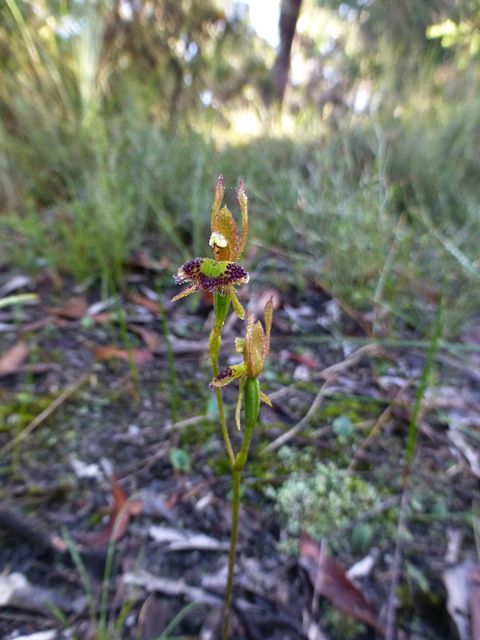
Fringed Hare Orchids
Continuing along this track we pass through a grove of Xanthorrhoea australis – Austral Grass Trees. These specimens appeared to be very healthy and free from Cinnamon Fungus. They displayed new stiff bluish-green leaves which are rhombic in cross-section and are about 3 mm wide. Some still had last seasons flower spikes, which were covered with many brown varnish-like seeds. They rarely flower except after fire. They are a pleasing sculptural plant which is slow growing and quite a feature in the heath land and woodland of this area.

Grasstrees
We then passed through a thick stand of Acacia suaveolens – Sweet Wattle. They are the first indigenous wattles to flower each year. They have masses of fragrant creamy yellow globular flower heads clustered along the branchlets. The foliage is bluish-green with stiff angular erect stems, and long narrow phyllodes with a prominent vein and taper to a point. Attractive broad, flat pale bluish seed pods develop after the flowering season, which again enhances the bush land.
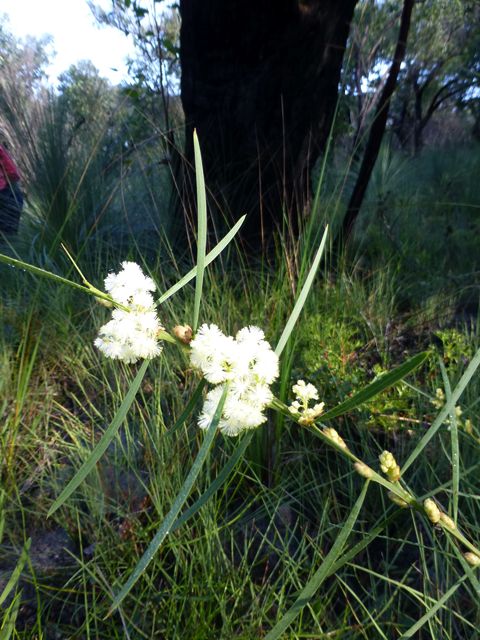
Further along the track we come to a side track. At this point some spectacular fungi were observed. The most colorful and largest specimen was Austraboletus niverus, a bolete, it does not have gills, but is spongy and the spores fall out through tiny holes. The cap was 150 mm wide, white and glutenous when young, becoming a pale orange with maturity, the pitted stems are glutenous to viscid, and are intensely bitter. Habitat is typically wet to dry forest and wood land.
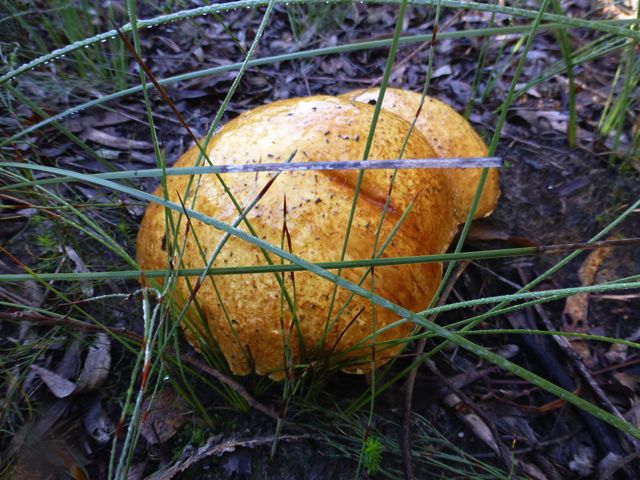
Austraboletus niverus
Another plentiful specimen was Amanita ochrophylla. The caps are whitish, about 100 mm which become flattened with age, and have wort like patches on them. This is a gilled specimen.
On turning left at the branch in the track, we saw many heath land plants including Monotoca scorparia – Prickly Broom Heath, Boronia nana var. nana – Dwarf Boronia, and Hibbertia fasciculata – Bundled Guinea Flower. This is an erect shrub about 30 cm in height which has bright green leaves arranged in dense clusters along the stem. The showy terminal flowers with five petals appear in winter-spring and are stalkless and surrounded by two triangular bracts.

Bundled Guinea flower – just one flower
Finally at the very end of the walk, there on its own was a lovely specimen of Epacris impressa – Common Heath. This was the white variety. Each flower is tubular with a ring of five indentations at the base. The leaves are very prickly, tapering to a sharp point. This plant is wide spread and grows to one metre high in heath land and wood land. The main flowering period is late autumn and winter.
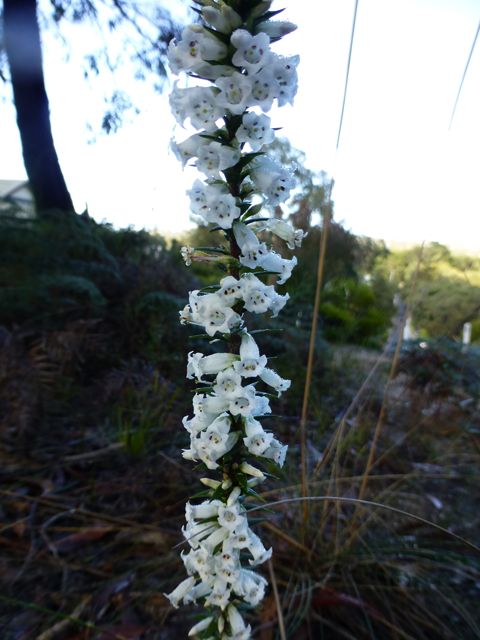
Photographer: M. MacDonald
Reporter: P. Hesterman